-
main-collection-product-grid
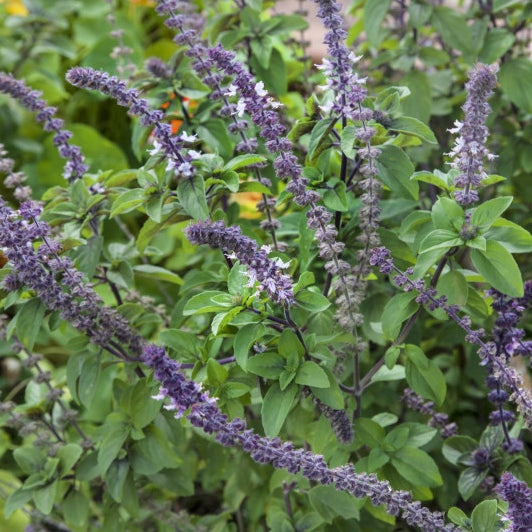
Basil Seeds - Blue Spice
Notes of vanilla, spice and lemon in a compact varietyBasil Seeds - Blue Spice
Notes of vanilla, spice and lemon in a compact varietyRegular price As Low As $4.79Regular priceUnit price per -
main-collection-product-grid
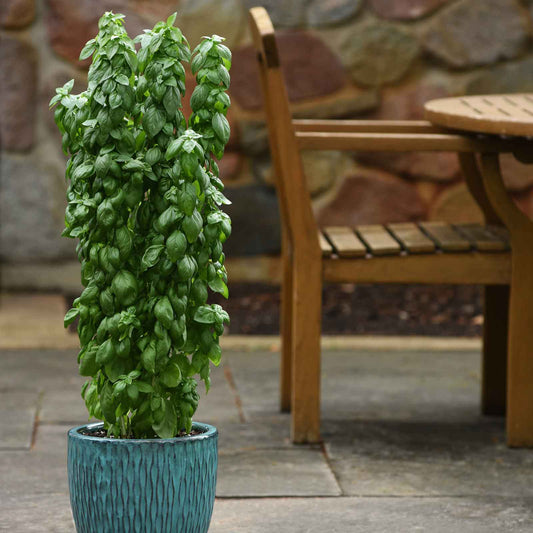
Basil Seeds - Everleaf Emerald Tower
Great for container gardening or as a decorative accentBasil Seeds - Everleaf Emerald Tower
Great for container gardening or as a decorative accentRegular price $6.29Regular priceUnit price per -
main-collection-product-grid
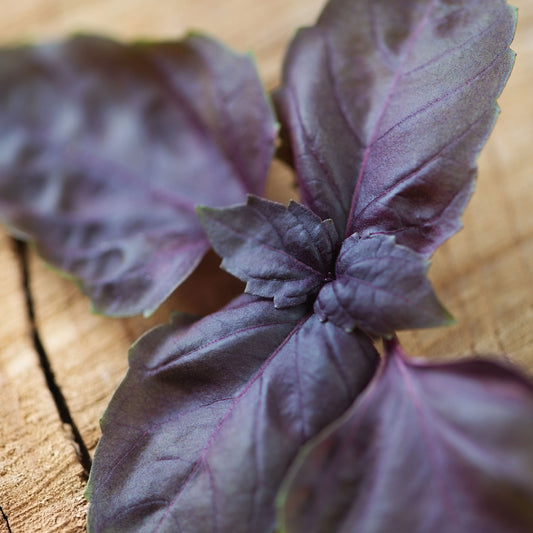
Basil Seeds - Purple
A red-leaved garden show stopper, intensely flavoredBasil Seeds - Purple
A red-leaved garden show stopper, intensely flavoredRegular price As Low As $5.79Regular priceUnit price per -
main-collection-product-grid
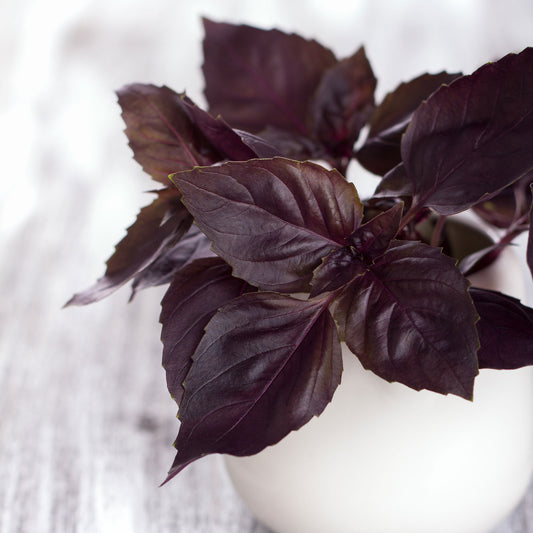
Basil Seeds (Organic) - Dark Opal
Beautify your dishes and garden with this dark purple stunnerBasil Seeds (Organic) - Dark Opal
Beautify your dishes and garden with this dark purple stunnerRegular price As Low As $6.29Regular priceUnit price per -
main-collection-product-grid
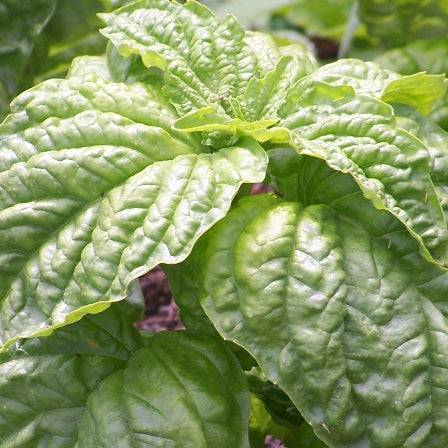
Basil Seeds - Mammoth
Large, ruffled leaves showing particularly well in saladsBasil Seeds - Mammoth
Large, ruffled leaves showing particularly well in saladsRegular price As Low As $4.49Regular priceUnit price per -
main-collection-product-grid
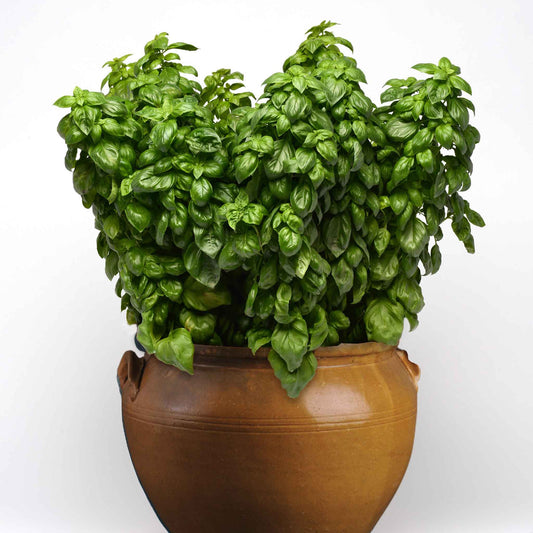
Basil Seeds - Everleaf Genovese
Flowers up to 8 weeks later than standard basilsBasil Seeds - Everleaf Genovese
Flowers up to 8 weeks later than standard basilsRegular price $6.29Regular priceUnit price per -
main-collection-product-grid
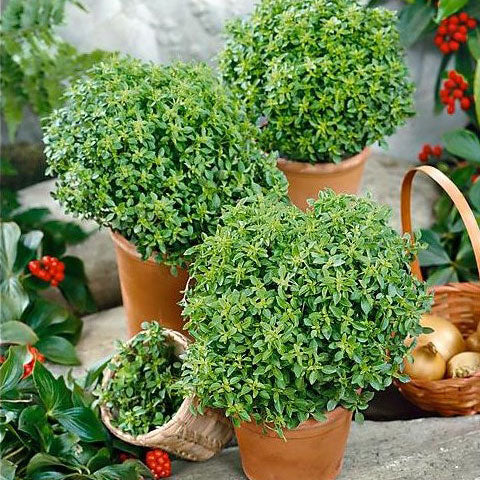
Basil Seeds - Minette Compact Greek
Small enough for a patio and an essential ingredient in many Italian dishesBasil Seeds - Minette Compact Greek
Small enough for a patio and an essential ingredient in many Italian dishesRegular price As Low As $4.79Regular priceUnit price per -
main-collection-product-grid
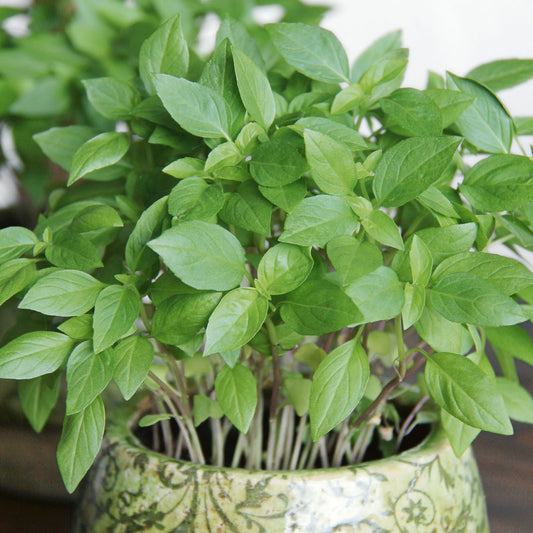
Basil Seeds (Organic) - Thai
Thai cuisine staple of anise, clove, and licoriceBasil Seeds (Organic) - Thai
Thai cuisine staple of anise, clove, and licoriceRegular price $6.29Regular priceUnit price per -
main-collection-product-grid
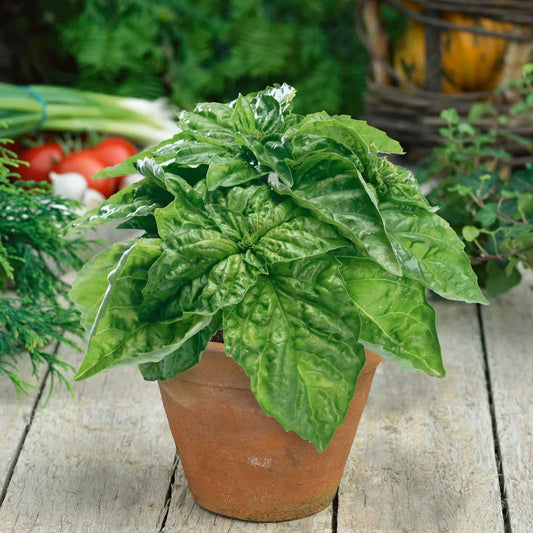
Basil Seeds - Lettuce Leaf
Sweet leaves large enough to wrap around chicken or fish for grillingBasil Seeds - Lettuce Leaf
Sweet leaves large enough to wrap around chicken or fish for grillingRegular price As Low As $4.49Regular priceUnit price per
What we love about growing basil
- 25 basil seed varieties
- Annual, or sometimes a perennial
- Used in a variety of culinary fashions, and even has medicinal purposes
- Highly aromatic and flavorful
The many uses of delicious basil
Basil is an annual, or sometimes perennial herb that is grown for its edible leaves. Native to tropical regions in Central Africa and Southeast Asia, basil has become wide-spread and incredibly popular for its uses in a variety of cuisines, and appearance in folk medicinal practices. It is an essential ingredient in many Italian dishes such as pesto and marinara sauce. In Taiwan, basil is often added to thick soups. It is also commonly used steeped in cream, or milk to add complex flavor to ice cream and even chocolate. However you use it, basil is a delicious addition to countless cuisines.
What species of basil should you grow?
Basil plants can grow to be one to five feet tall, depending on the variety. Its leaves are typically dark green and ovate, but vary in size and shape depending on the species. Sweet, Genovese, Italian Large Leaf, Lemon, and Thai Basil are all popular varieties. The selection, however, does not stop there. There is a basil variety to suit almost any culinary need.
The best location for growing basil seeds
Growing basil is incredibly easy and requires very little effort. Many gardeners choose to grow basil in containers or garden beds near the kitchen door, where they can be easily be pinched for cooking. When selecting your growing location, it is best to look for a spot that receives at least six hours of direct sunlight a day, and preferably an area that is sheltered from cold winds. Basil thrives in poor, gravelly, well-draining soil. Seeds can be started indoors as early as six weeks before the last frost and then transferred outside after weather has warmed and the seedlings have been hardened off.
To plant, till the area to loosen the soil and amend with compost or well-rotted manure to add good drainage. Sow basil seeds 1/4 inch deep. Thin successful plants to eight inches apart (or more, depending on the variety). Space the rows 18 to 24 inches apart. Keep the basil soil moist, but be sure not to overwater.
When to harvest basil
Once you are ready to harvest your basil, you can easily pinch off the leaves. The most favorable time for cutting is early in the morning after the dew has dried, but before the plants have been visited by the hot midday sun. Since basil will be killed off by any touch of frost, gardeners can prolong its life by bringing containers of basil indoors into a warm and sunny location near a south-facing window. Zones 9 and above can keep basil growing outside year-round.
For more information about planting, growing, and caring for basil, see the Basil Seeds Planting Guide.








